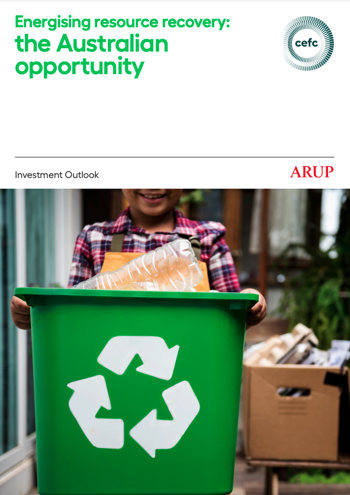
Insights
Energising resource recovery: the Australian opportunity
An investment outlook to 2050 for the Australian waste and bioenergy sector
This report considers the role of resource and energy recovery in Australia’s transition to a low emissions economy. It concludes that the sector could contribute significantly to Australia’s economic, employment and emissions goals with additional social benefits.
About this report
Energising resource recovery: the Australian opportunity
May 2021
Energising resource recovery: the Australian opportunity was developed by the CEFC, together with global engineering and consultancy leader Arup.
Read moreAs an experienced investor in the bioenergy, recycling and energy from waste sectors, we see immediate and important investment opportunities in recycling and resource recovery, drawing on proven technologies with the potential to deliver long term economic and environmental benefits.
about the industry
Waste and bioenergy market drivers
- Australia’s recycling and resource recovery sector is undergoing considerable transformation, driven by global market pressures, evolving consumer preferences and an increasing focus on cutting our carbon footprint.
- The bioenergy and waste sectors are particularly diverse, encompassing a broad range of feedstocks, technologies and end uses – all of which have the potential to cut Australia’s emissions, contribute to the circular economy and drive investment.
- Key factors influencing investment are the circular economy, policy drivers, landfill levies, resource recovery market development, bioenergy as a flexible energy source, and resilient supply chains.
report findings
Market potential
- New and expanded infrastructure requirements for waste, recycling and bioenergy projects in Australia have the potential to generate between $4 billion and $7.8 billion in new investment in the period to 2025.
- The employment benefits include the potential for the creation of up to 9,000 construction jobs, 2,600 indirect jobs and as many as 1,400 direct and ongoing jobs, including in regional and rural areas.
- Emissions reductions are also significant, with the potential to reduce emissions from landfill by as much as 60 per cent by substantially reducing, reusing and recycling materials before they enter the waste stream, in line with the waste hierarchy.





